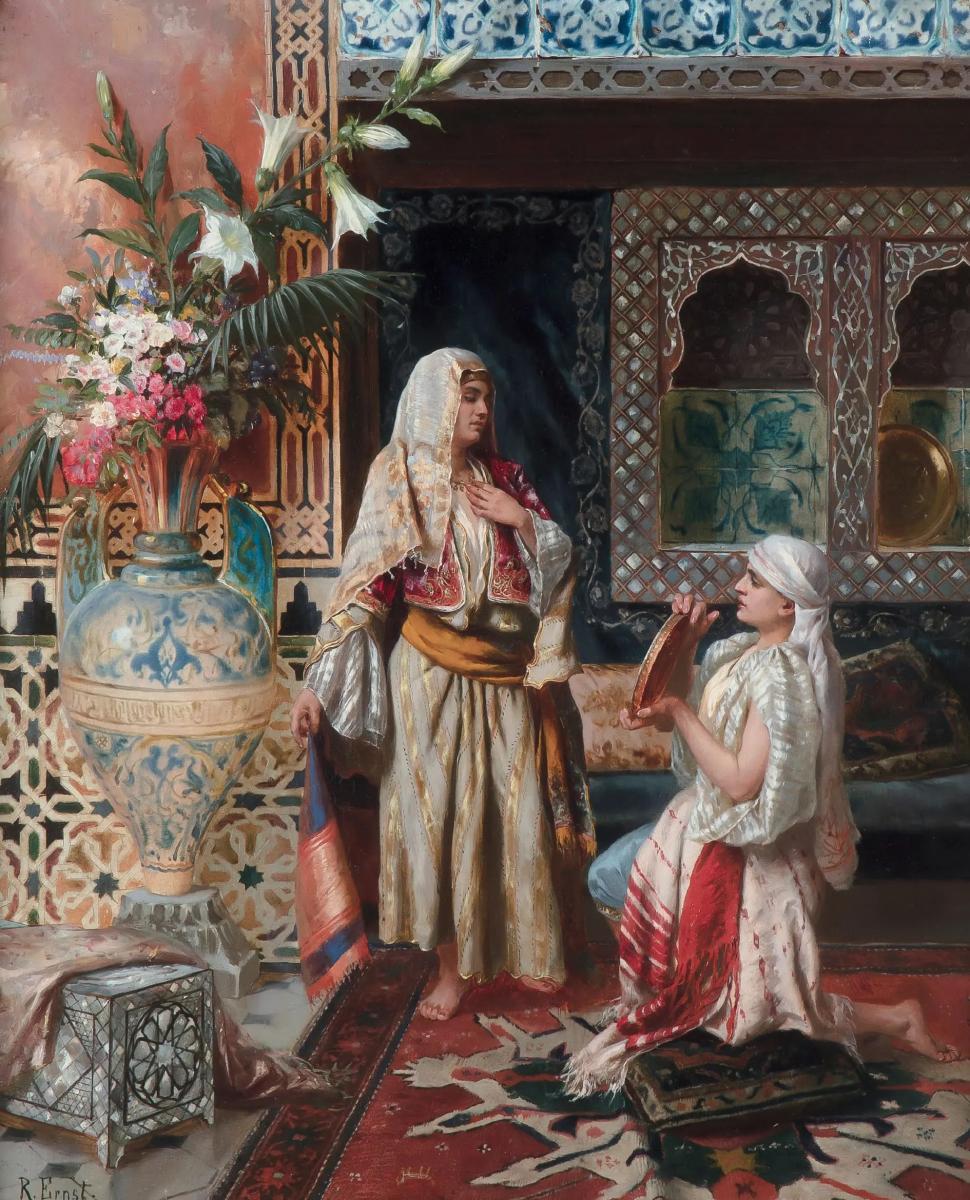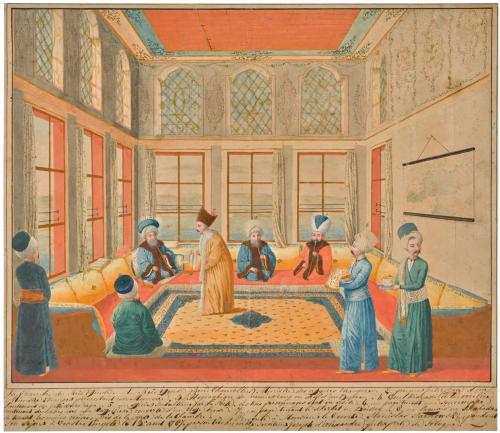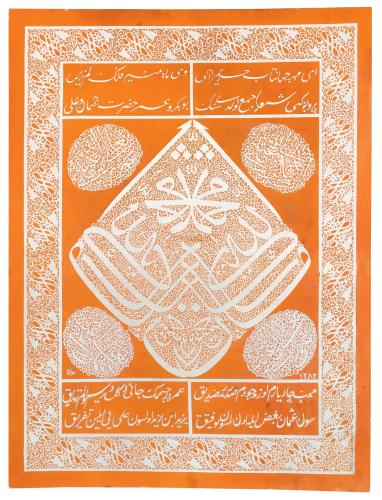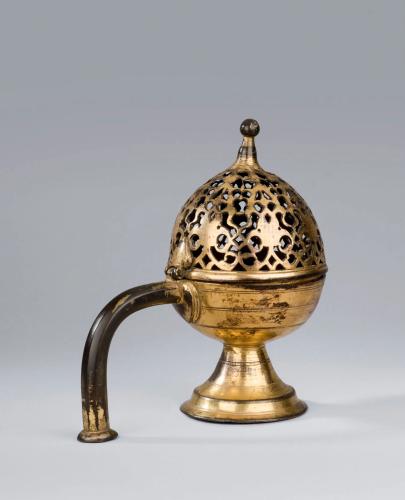

Price on application
This object is eligible for a Certificate of BADA Provenance
The BADA Standard
- Since 1918, BADA has been the leading association for the antiques and fine art trade
- Members are elected for their knowledge, integrity and quality of stock
- Our clients are protected by BADA’s code of conduct
- Our dealers’ membership is reviewed and renewed annually
- Bada.org is a non-profit site: clients deal directly with members and they pay no hidden fees
Rudolf Ernst, The Favourite.
Signed ‘R. Ernst’.
Oil on Board.
46.5 x 37.5 cm.
This painting, titled ‘the Favourite’ is one of Ernst’s finest Harem works. It depicts the head of the Harem on a large carpet, wearing a silk robe and a velvet vest, holding a silk cloth in her right hand. She is admiring herself in a round mirror, held by a servant. On her right is a monumental Nasrid ‘Alhambra’ vase, a mother-of-pearl inlaid calligrapher’s chest with a pink silk cover. The wall in the background is decorated with Nasrid mosaics and Iznik tiles, wooden niches inlaid with mother-of-pearl. There is a tombak dish decorated with Soliman’s star (mühr-i Süleyman) in the right niche. Just under the niches is a sofa, with two silk-covered cushions. With this meticulous details Ernst creates a perfect interior, reflecting the glamour of the palatial interior with warmth and vitality.
The viewer may follow the unmistakable upward movement rising from the servant’s level to the Favourite and then reaching the zenith with the flowers in the ‘Alhambra’ vase. The calm order in the background and the upward movement in the front create a pleasant contrast and enhance the liveliness of the composition.
Rudolf Ernst (1854-1932)
Born in Vienna on 14 February 1854, Rudolf Ernst is one of the leading painters of the Orientalist movement. He was first inspired by his father who was an architect and an esteemed member of the Vienna Fine Arts Academy. Ernst enrolled as a student of the Academy in 1869. Between 1873 and 1876 he studied history of painting under the supervision of Anselm Feuerbach.
In 1875 he received the special prize from the Academy. In the last year of his study he applied for a scholarship to visit Rome. He went to Paris and studied with Ludwig Deutch and Johann Discart. In Paris he befriended painters including Charles Wilda, Arthur Ferraris, Raphael Ambros and Rudolf Weiss.
He moved to Paris and opened his workshop in Rue de Naval. He exhibited at the Salon des Artistes Français in Paris. In the early stages of his career he mostly worked on portraits and genre scenes, turning later to Orientalist subjects. He was celebrated for painting with great skill and extraordinary precision. In the first stages of his professional life, he was supported by the famous French art dealer Adolphe Goupil, the painter Gerome’s father in law. Goupil provided private commissions from the United States for Ernst and helped him to develop an international reputation. In 1880 he visited Constantinople. In 1883 he met Osman Hamdy Bey, a student of Gerome. He achieved great success during his stay in the Ottoman capital.
In 1889 he exhibited at Salon des Artistes Français the following works: ‘A Guardian in Cairo’, ‘Portrait of M.C.B.’, ‘Imperial Guards of the Ottoman Palace’.
In the same year he won the bronze medal at the Exposition Universale in Paris. His portrait of Agop Pasha was included in the German biographical dictionary of artists Thieme-Becker. He painted portraits of members of the Ottoman court. Following his return to France in 1905 he left his old workshop and moved to Fontenay- aux-Roses.
Rudolf Ernst is famed as a master painter of the Orientalist movement, focused on painting scenes he had memorized or photographed during his voyages. Aside from photographs and sketches from his travels, he gathered a large collection of ceramics, tiles, fabrics, carpets, daggers and other weapons. He died in 1932. His paintings are preserved in French museums and international museums, foundations and private collections around the world. For a detailed account on his carrier and illustrated works please see: Martina Haja & Gunter Wimmer’s Les Orientalistes des Ecoles Allemande et Autrichienne, ACR Edition, Paris, 2000, pp. 226-252.
The BADA Standard
- Since 1918, BADA has been the leading association for the antiques and fine art trade
- Members are elected for their knowledge, integrity and quality of stock
- Our clients are protected by BADA’s code of conduct
- Our dealers’ membership is reviewed and renewed annually
- Bada.org is a non-profit site: clients deal directly with members and they pay no hidden fees




